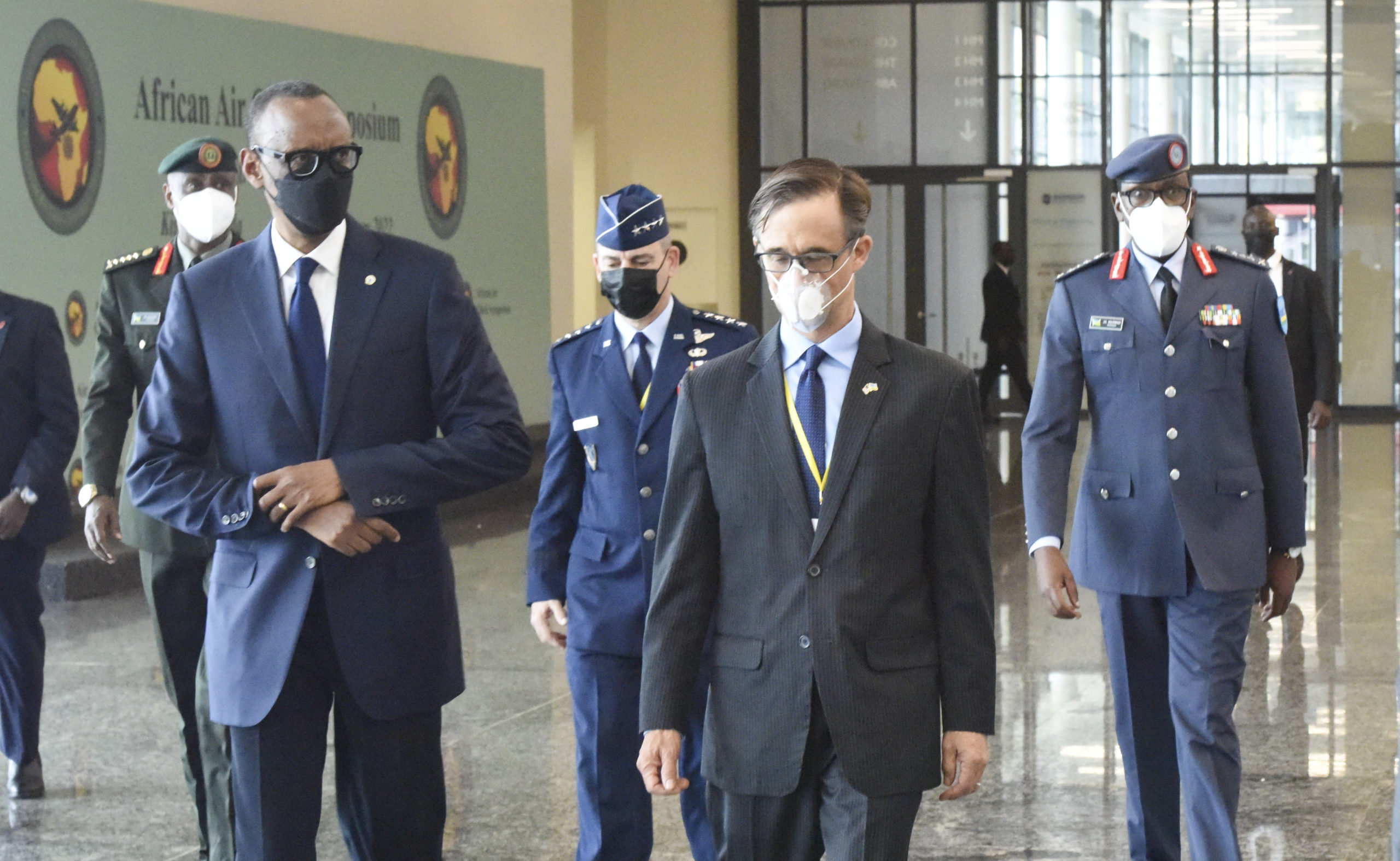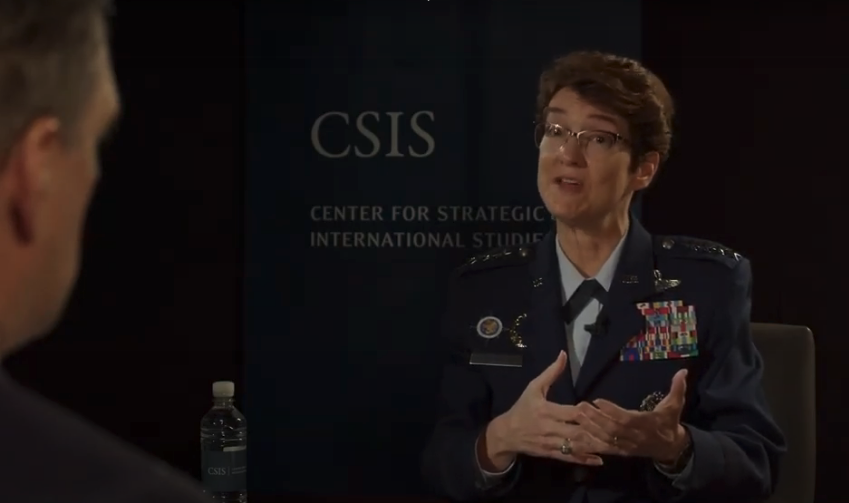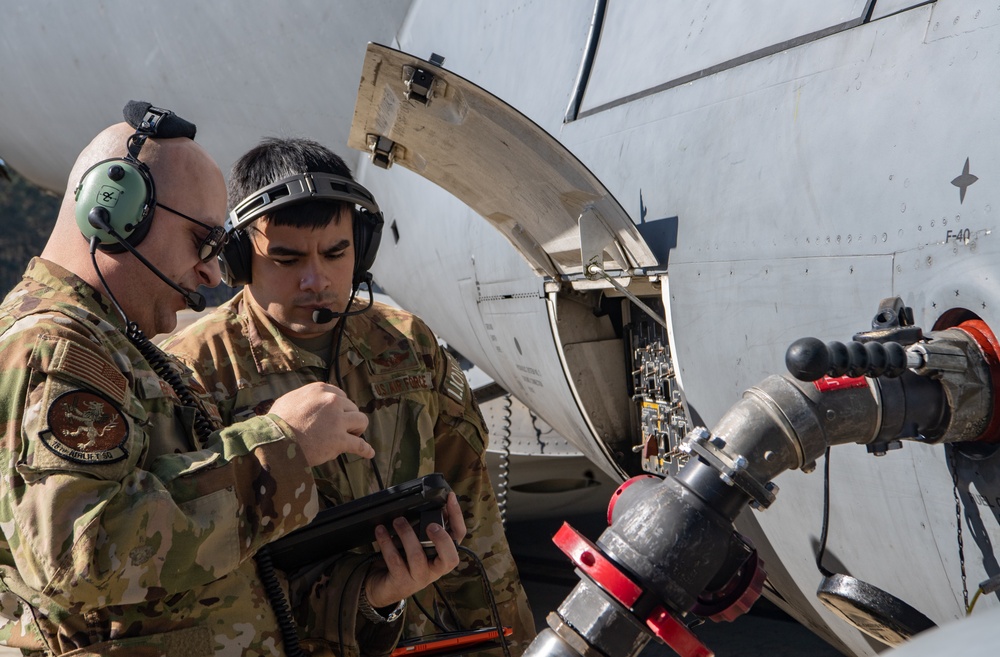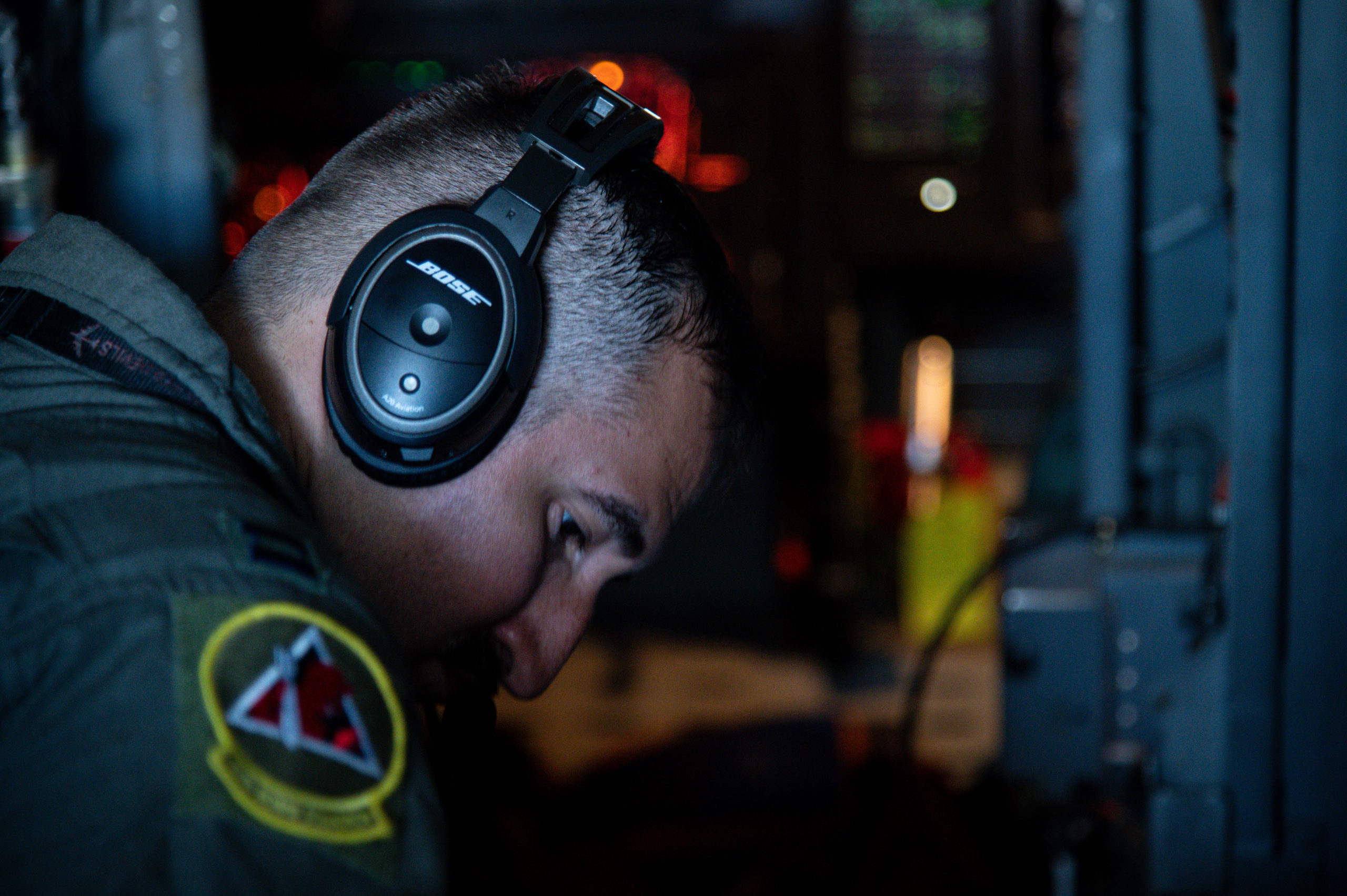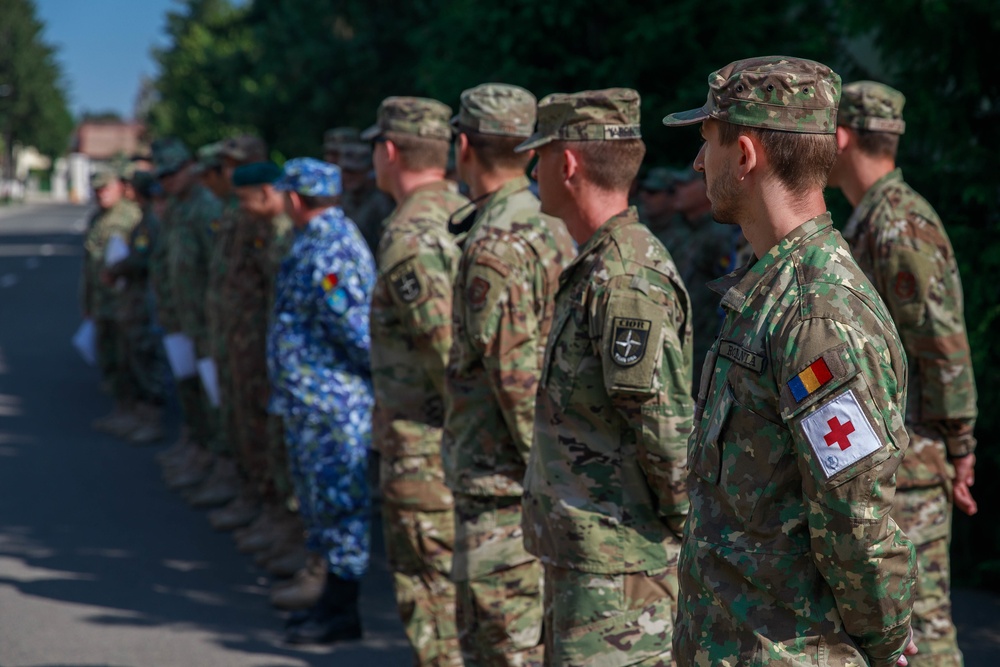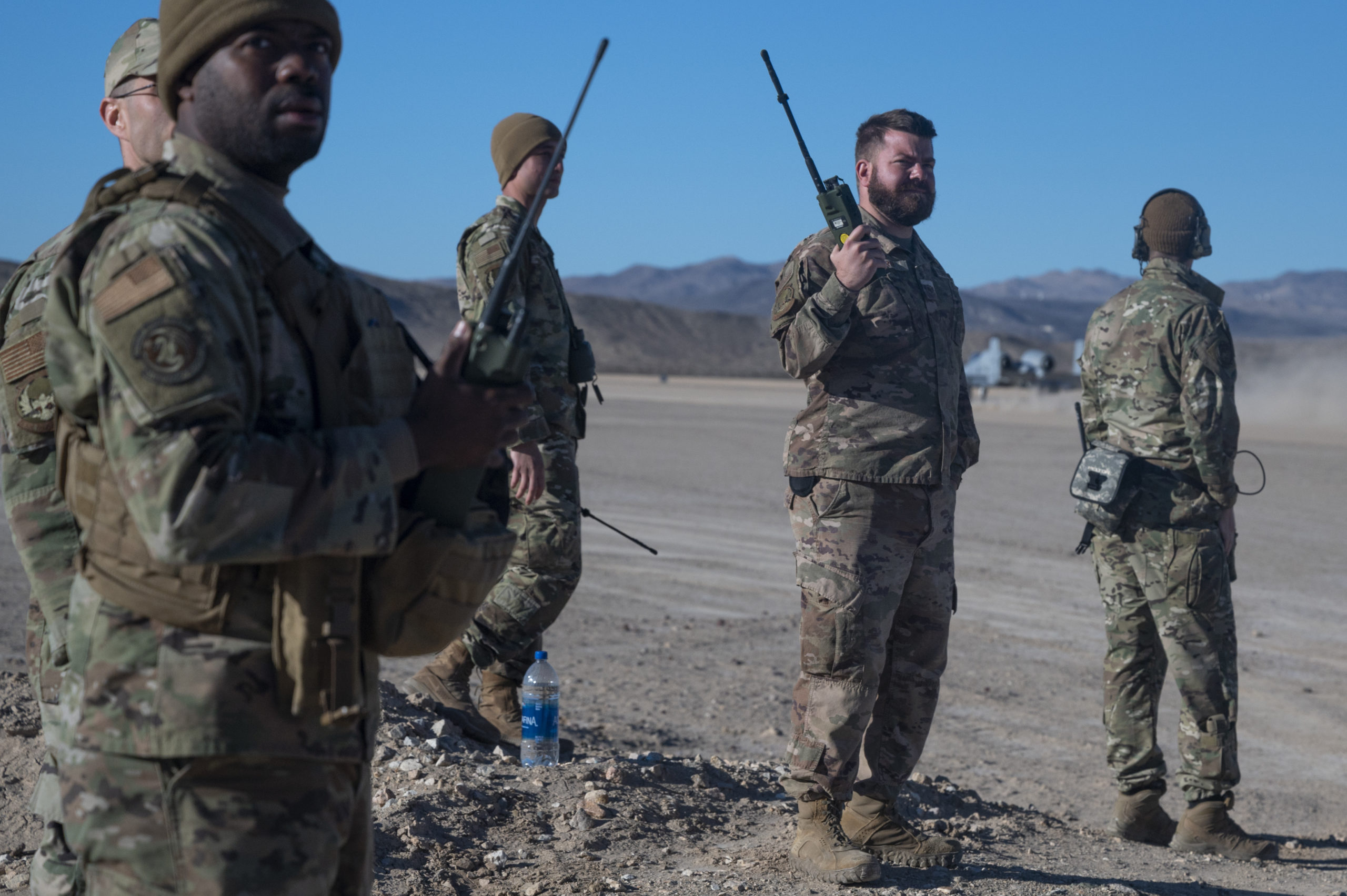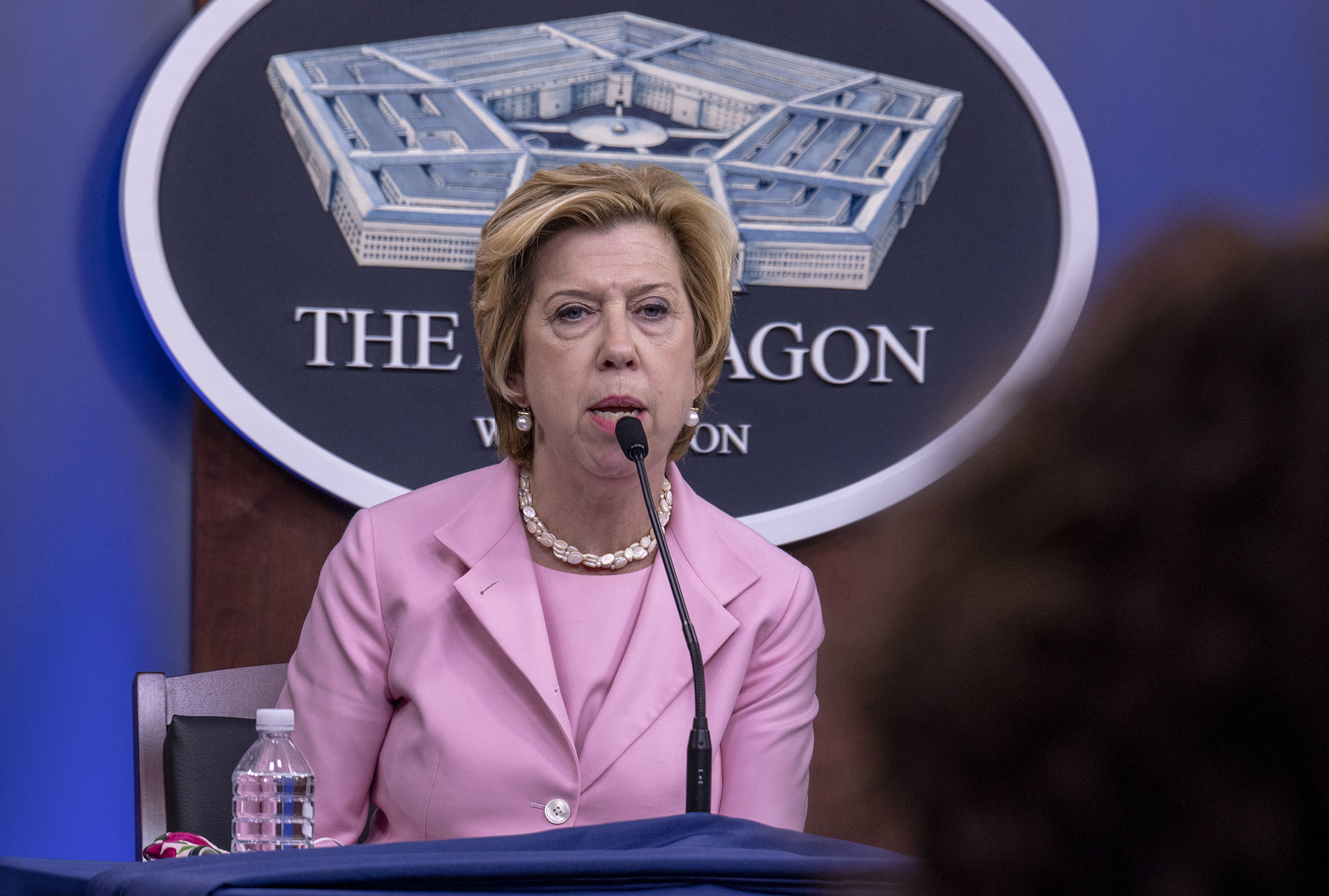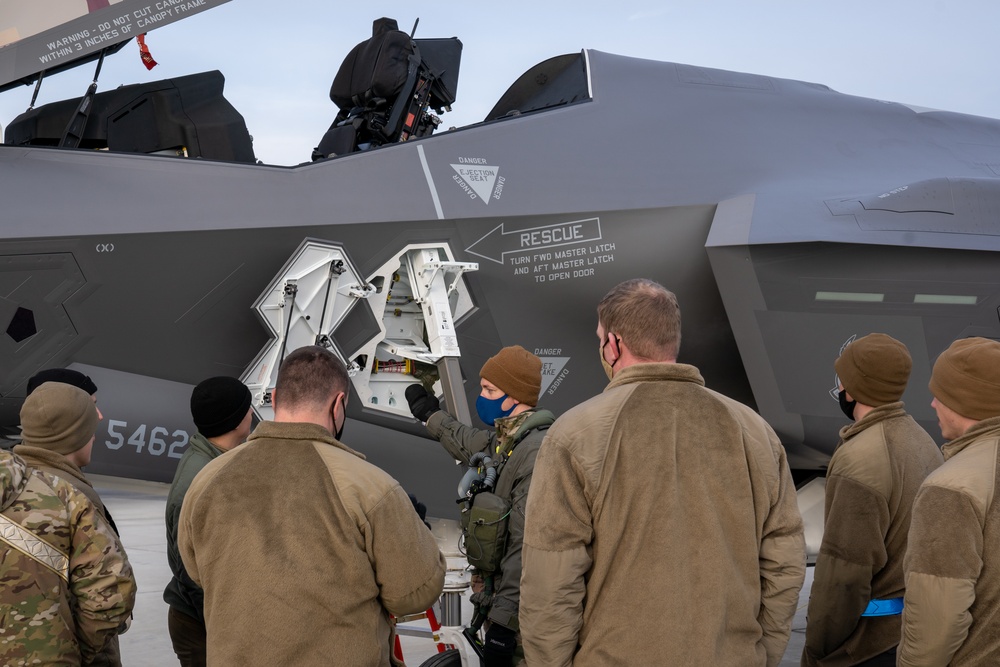AFRICAN AIR CHIEFS SYMPOSIUM, KIGALI, Rwanda—Security is the thing many Rwandans love most about their country. The land of a thousand hills has clean streets, where citizens can safely walk at night. The countrysides of rice and banana plantations are lush and carefully manicured. Police officers man the corners of city streets in the capital, Kigali, and the Rwandan military participates in peacekeeping missions across the continent, with the U.S. Air Force providing strategic lift to Rwandan defense forces.
But another Rwanda emerged since President Paul Kagame’s Rwandan Patriotic Front entered the country from Uganda, overthrew the government, and ended the 1994 genocide that killed nearly a million Tutsis.
Kagame, 64, now presides over a peaceful oasis in a continent plagued by instability, military coups, violent extremist groups, and deep poverty, but accusations of human rights abuses plague the celebrated hero known by most as “his excellency.” President since 2000, Kagame’s government is accused of targeted assassinations, disappearances, and torture, including the deaths of journalists and opposition figures, according to the non-profit group Human Rights Watch.
The president has elevated his international reputation militarily by participating in peacekeeping missions in troubled regions of Africa. This year, Rwanda also co-hosted the 11th African Air Chiefs Symposium with United States Air Forces in Europe-Air Forces Africa Jan. 24-28 in Kigali.
“Most observers would agree, Rwanda is not a stable country,” National Defense University scholar Joseph Siegle told Air Force Magazine in a telephone interview before the symposium. “They’ve just put a lid on all of these building up pressures that are there, even though outwardly, it seems to be so.”
But Rwanda is secure, Siegle amitted, and it has the influence in the Great Lakes region of Africa to prevent instability from spreading from the troubled eastern region of the Democratic Republic of Congo.
“It’s a smoldering set of challenges, and they are pursuing regional solutions,” Siegle explained.
Hence Rwanda’s hosting of this year’s AACS, the first in-person event in two years, with a goal to work toward shared strategic airlift on the continent.
“Many of Africa’s emerging security challenges are transnational, and so, no one country has the resources to respond alone. We must prioritize the benefits of working together,” Kagame said during his brief and much-celebrated symposium attendance to deliver opening remarks amid intense security.
“Security and prosperity are two sides of the same coin, you cannot have one without the other,” he concluded.
USAFE-AFAFRICA commander Gen. Jeffrey L. Harrigian told Air Force Magazine that balancing human rights concerns with the U.S. military’s strategic objectives requires engagement that can lead to improvements.
“The important part for me personally has been, let’s understand the entire picture,” he said in an exclusive interview before the start of the final conference day.
“Clearly, human rights is important to us, and something that, as the United States, this is who we are. But at the same time, understanding the nuances of what’s happening here was something that was important to me, because it gives context to the relationships,” he said, noting that he had several engagements prior to the event with U.S. Ambassador to Rwanda Peter H. Vrooman. The conference week also helped to deepen U.S. Air Force and Rwanda Defence Force trust and cooperation.
“As we’ve, I’ll call it, ‘matured,’ our relationship with the Rwanda Defence Force here, at least this past week, it’s clear to me, they are extremely professional, dedicated to their mission set,” Harrigian said. “I think it’s in our best interest to stay close to them and continue to grow this relationship because at the end of the day, they will continue to grow their capabilities.”
He added: “We walk the journey together, and if we’re not here, that will come to an end. … I would offer it’s not in our interest to do that.”

Rwanda-U.S. Cooperation
Rwanda’s participation in African Union peacekeeping missions across the continent has contributed to stability and allowed African nations to manage their own crises with reduced external assistance from the U.S. Air Force and European partners.
In January and February 2014, two U.S. Air Force C-17s airlifted a Rwandan mechanized battalion of 850 soldiers and more than 1,000 tons of equipment to the Central African Republic for a peacekeeping mission.
In recent years, Rwanda has sent peacekeeping forces to Mozambique and Sudan, providing airlift, evacuation, and use of air assets in joint actions. Before Rwanda’s participation in the United Nations–African Union Mission in Darfur, which ended in 2016, Rwanda was the second largest contributor of peacekeeping forces in the world. It now stands at fourth, according to the RDF.
In remarks July 21, 2021 at a U.S.-Rwanda preparatory meeting for the 2021 Peacekeeping Ministerial in Seoul, Vrooman highlighted the U.S.-Rwanda partnership, and Rwanda’s peacekeeping efforts over nearly two decades.
“Rwanda undertakes peacekeeping as a constitutional and moral obligation,” Vrooman said, reflecting on how the UN failed to act to prevent the 1994 genocide.
The ambassador noted how the United States has trained and the RDF has deployed more than 45,000 personnel in support of UN missions globally. As of July 2021, Rwanda had more than 5,000 troops, police, and others on UN missions.
In a pull aside interview after his remarks at AACS, Vrooman told Air Force Magazine about the delicate balance between human rights concerns and military-to-military ties.
“I’m really a strong believer in engagement, diplomatic as well as military engagement,” Vrooman said. “Some people don’t always believe in that, but I have found that that’s really how you come to greater understanding. It doesn’t mean that you will always have influence. But, if you don’t try, you won’t have any effect.”
The Rwanda Defence Force cooperates with the United States mainly in the training of some Air Force cadets and senior officers at air staff and command courses, RDF said. Such courses often include human rights and law of war training.
Vrooman said he has seen firsthand the benefits of U.S. training to instill human rights values.
“Rwandans are very receptive to it,” said Vrooman, a former student at the National Defense University.
Vrooman said using pressure tactics like sanctions are hard to roll back, and can limit the opportunity to deepen a partnership and exert positive influence.
“That limits your ability at times to be able to engage. So, it’s a balancing act,” he said.
In written responses to questions from Air Force Magazine, Rwandan Defence Force spokesman Col. Ronald Rwivanga flatly denied that his country commits human rights abuses.
“False and unfounded accusations,” Rwivanga said. “Where the answer is not satisfactory there are courts to deliver individual concerns.”
Asked what is being done to strengthen human rights in Rwanda and the RDF, Rwivanga said: “They are already strong enough.”
“A people centered transformation agenda, a justice system that satisfies Rwanda[’]s needs, and an economy that is steadily growing and strives to improve the livelihood of the citizens is what we consider to be the principle human rights,” he said. “All dissent and contestation is managed through democratic channels by electing the right leaders that people want. This is what is happening and will continue to happen.”
